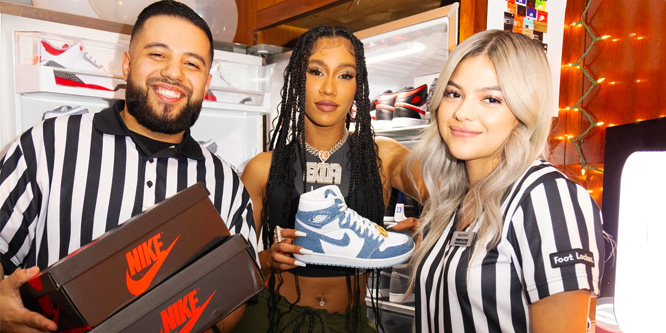In her first quarterly analyst call as Foot Locker’s CEO, Mary Dillon, who led Ulta Beauty for eight years, said she sees many parallels between sneakers and the beauty category when it comes to supporting growth, but also sees a bigger opportunity for Foot Locker to drive consumer demand.
“Much like beauty, [the] sneaker category is driven by passionate enthusiasts who are deeply engaged in the category, products that allow for individual expressions that are fun to shop for, and where newness and innovation matters,” said Ms. Dillon on the call. ”Also, sneakers are affordable luxury.”
Global casualization trends have been a major tailwind for the sneaker category.
Likee beauty, sneaker buyers demand “choice and variety” and Foot Locker’s efforts to accelerate brand diversification will continue. In February, Foot Locker announced that Nike’s portion of Foot Locker’s sales would decline to about 55 percent by the fourth quarter of 2022 — down from approximately 65 percent in the 2021 fourth quarter and 75 percent overall for 2020 — due to Nike’s shift toward direct-to-consumer sales.
Ms. Dillon said Nike remains a “very important” partner and supports basketball, sneaker culture and kids categories. However, she noted that 80 percent of Foot Locker’s best customers already buy three or more brands. Amplified assortments of Adidas, Puma, Crocs, Converse, New Balance, Ugg, On and Hoka are also attracting new customers.
One hurdle will be overcoming the loss of traffic-driving signature launches as Nike is providing less “high heat” allocation and Adidas has ended its Yeezy collaboration with Kanye West. However, Foot Locker’s brand diversification efforts are designed to bring more innovation to selling floors and making the retailer less reliant on the launch calendar.
Opportunities Ms. Dillon sees include shifting its go-to-market approach “in many ways from being product-led to consumer-led.” Steps include adding more value-elevated engagement with its FLX loyalty program, tapping data analytics to amplify digital marketing efforts and better capitalizing on its omnichannel reach.
Ms. Dillon said the aim is to tap tools to “create a demand engine that’s bigger than just the products that we sell.”


